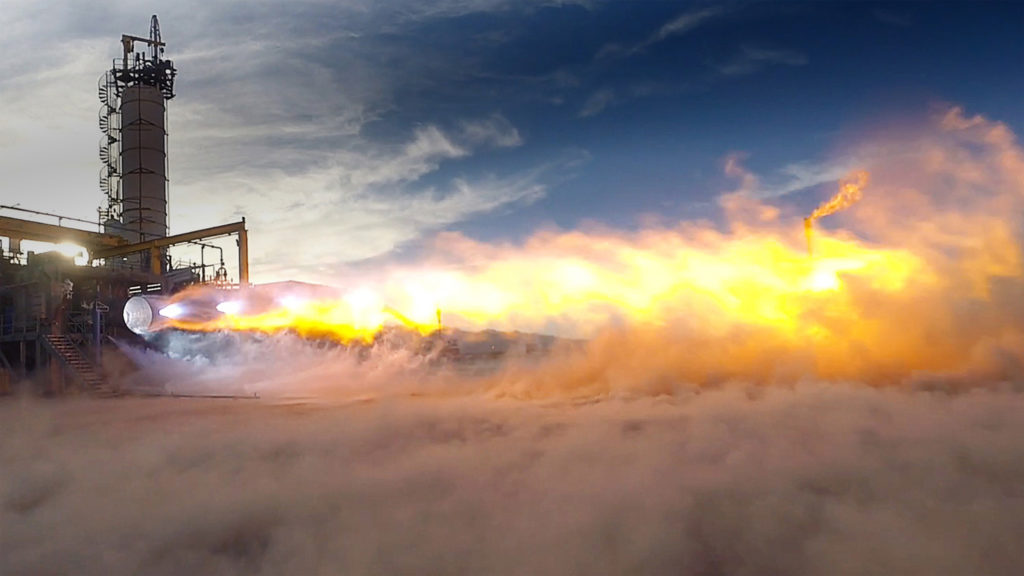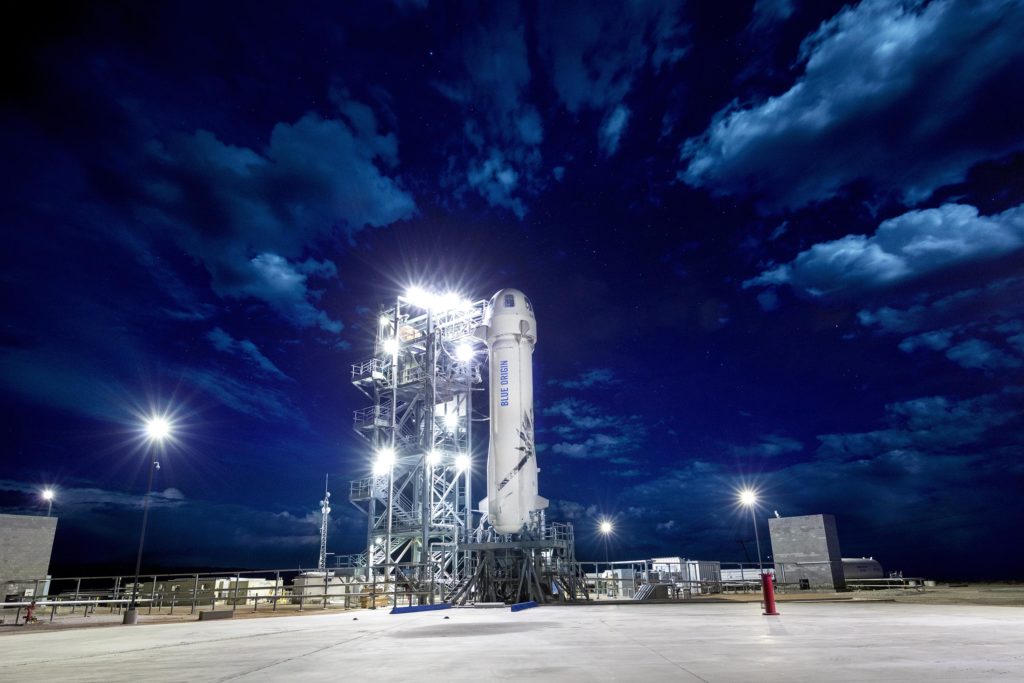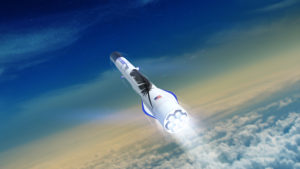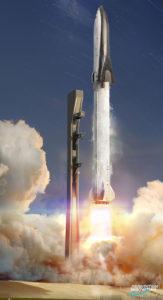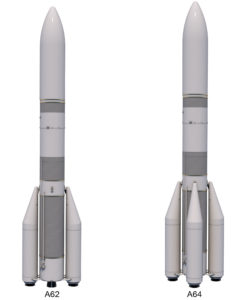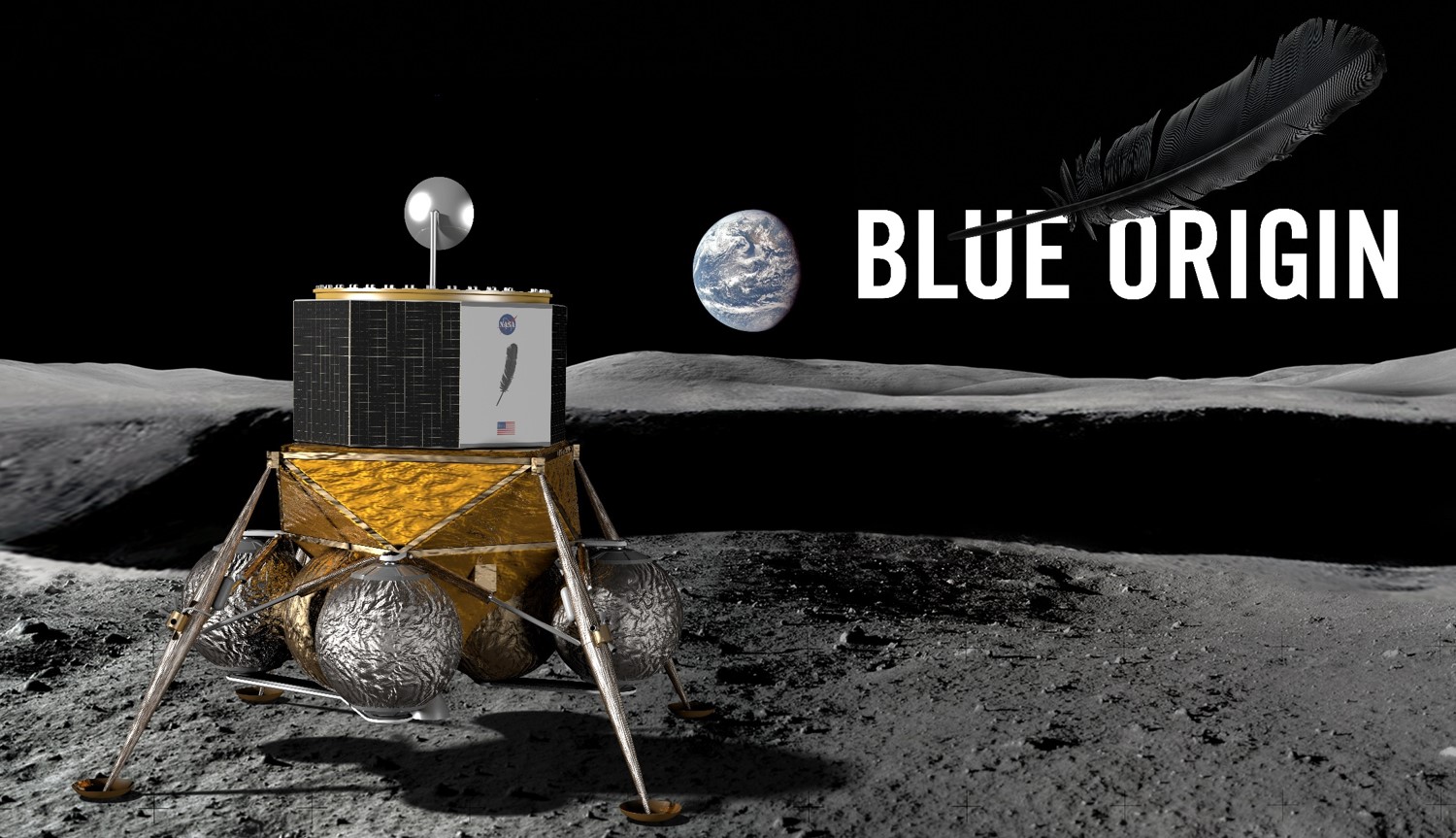
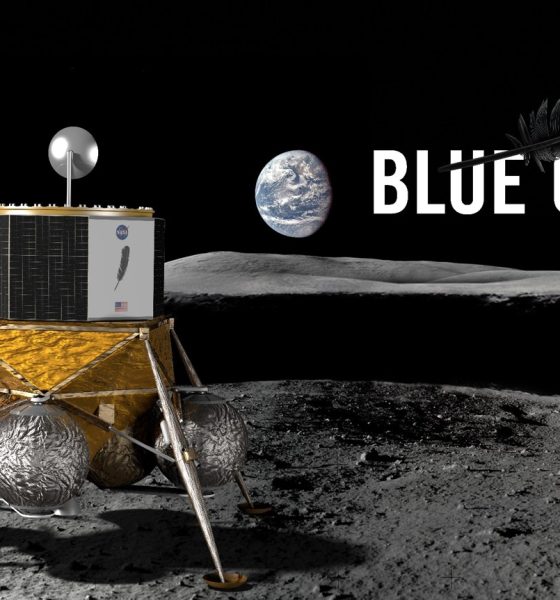
News
SpaceX competitor Blue Origin targets first Moon landing for 2023
Prospective SpaceX competitor and reusable rocket developer Blue Origin detailed its plans earlier this month to enable significant human presence on the Moon and announced a tentative schedule that could see the company begin experimental lunar landing tests of a multi-ton spacecraft just a few years from today – NET 2023.
Funded entirely with stock sales courtesy of founder Jeff Bezos’ lucrative position at the helm of Amazon (not to mention his status as the wealthiest human alive), Blue Origin receives roughly $1 billion annually to develop its space tourism-oriented New Shepard rocket and capsule (suborbital), the magnitudes-larger orbital New Glenn launch vehicle, and a number of other longer-term projects like human colonies in Earth orbit (including the Moon).
In answer to my question, @ac_charania said would evolve to reusable Blue Moon lander. Also under consideration is reusable New Glenn upper stage & faring. https://t.co/Dg3UTN9HU5
— Charles A. Lurio (@TheLurioReport) July 4, 2018
Think SpaceX in terms of ambition (and, perhaps, quality of workforce) but with essentially no existential motivation to field products quickly – framed a bit less flatteringly, Blue Origin moves very slowly when compared with SpaceX. The company was born a full two years before SpaceX and has been working on reusable rockets for at least as long, yet has less than ten launches of a genuinely reusable rocket to claim its own. That rocket, New Shepard, is a purely suborbital, single-stage vehicle intended to enable zero-gee tourism, and is downright minuscule when examined alongside Falcon 9 and Heavy.
- Blue Origin’s BE-4 engine, the propulsion for New Glenn, seen conducting hot-fire tests in Texas. The engine’s nozzles is a full 6 feet (~1.8m) in diameter. (Blue Origin)
- New Shepard ahead of Blue Origin’s most recent suborbital launch, the eighth completed so far. April 2018. (Blue Origin)
New Glenn, however, would truly catapult Blue Origin into a competitive position in the orbital launch business, placing them alongside companies like SpaceX, ULA, and Arianespace. Further, Blue appears to believe that it can design and produce New Glenn boosters capable of as many as 25 flights from the get-go, versus the three years SpaceX spent iteratively design and upgrading its Falcon 9 before arriving at a booster potentially capable of 10-100 reuses. New Glenn’s inaugural launch is currently scheduled for late 2020, and the impressive BE-4 methalox rocket engine powering its first stage is well into serious hot-fire testing, while the engine that will power New Glenn’s upper stage is already successfully flying (albeit as a sea-level variant) on New Shepard.
In a glance, Blue Origin undoubtedly has a lot going for it, although its confidence quite plainly outstrips its the achievements it can actually lay claim to at present. Nevertheless, the company’s Blue Moon project is clearly serious and will build heavily on the (hoped for) successes of New Shepard and New Glenn, integrating the hands-on experience and technologies developed over the course of building and launching both rockets. Presumably depending on New Glenn as the launch vehicle, Blue Origin stated on July 3 that its lunar lander – designed to deliver multiple tons of cargo to the Moon’s surface – could begin experimental Moon missions by 2023 and potentially even sooner if work proceeds exceptionally smoothly.
- Blue Origin’s New Glenn rocket. (Blue Origin)
- SpaceX’s BFR. (Gravitation Innovation/David Romax)
- Credit: NASA-MSFC
- Arianespace’s next-generation Ariane 6. (Arianespace)
- ULA’s upcoming Vulcan rocket. (ULA)
Whether or not Blue Origin manages to make that extraordinarily aggressive scheduled and jumps from suborbital missions to giant orbital reusable rocket launches to multi-ton Moon landings in barely five years, the 2020s are lining up to be an extraordinarily exciting time for spaceflight. With any luck, a veritable fleet of next-generation rockets from Blue Origin, SpaceX, Arianespace, ULA, NASA, Japan, and five or more smaller commercial companies will complete their first launches over the next three years.
Meanwhile, heavyweights SpaceX and Blue Origin may find themselves in a whole different arena, racing to land payloads on the Moon (or perhaps on the Moon and Mars).

News
Tesla backtracks on strange Nav feature after numerous complaints

Tesla is backtracking on a strange adjustment it made to its in-car Navigation feature after numerous complaints from owners convinced the company to make a change.
Tesla’s in-car Navigation is catered to its vehicles, as it routes Supercharging stops and preps your vehicle for charging with preconditioning. It is also very intuitive, and features other things like weather radar and a detailed map outlining points of interest.
However, a recent change to the Navigation by Tesla did not go unnoticed, and owners were really upset about it.
For trips that required multiple Supercharger stops, Tesla decided to implement a naming change, which did not show the city or state of each charging stop. Instead, it just showed the business where the Supercharger was located, giving many owners an unwelcome surprise.
However, Tesla’s Director of Supercharging, Max de Zegher, admitted the update was a “big mistake on our end,” and made a change that rolled out within 24 hours:
The naming change should have happened at once, instead of in 2 sequential steps. That was a big miss on our end. We do listen to the community and we do course-correct fast. The accelerated fix rolled out last night. The Tesla App is updated and most in-car touchscreens should…
— Max (@MdeZegher) November 20, 2025
The lack of a name for the city where a Supercharging stop would be made caused some confusion for owners in the short term. Some drivers argued that it was more difficult to make stops at some familiar locations that were special to them. Others were not too keen on not knowing where they were going to be along their trip.
Tesla was quick to scramble to resolve this issue, and it did a great job of rolling it out in an expedited manner, as de Zegher said that most in-car touch screens would notice the fix within one day of the change being rolled out.
Additionally, there will be even more improvements in December, as Tesla plans to show the common name/amenity below the site name as well, which will give people a better idea of what to expect when they arrive at a Supercharger.
News
Dutch regulator RDW confirms Tesla FSD February 2026 target
The regulator emphasized that safety, not public pressure, will decide whether FSD receives authorization for use in Europe.
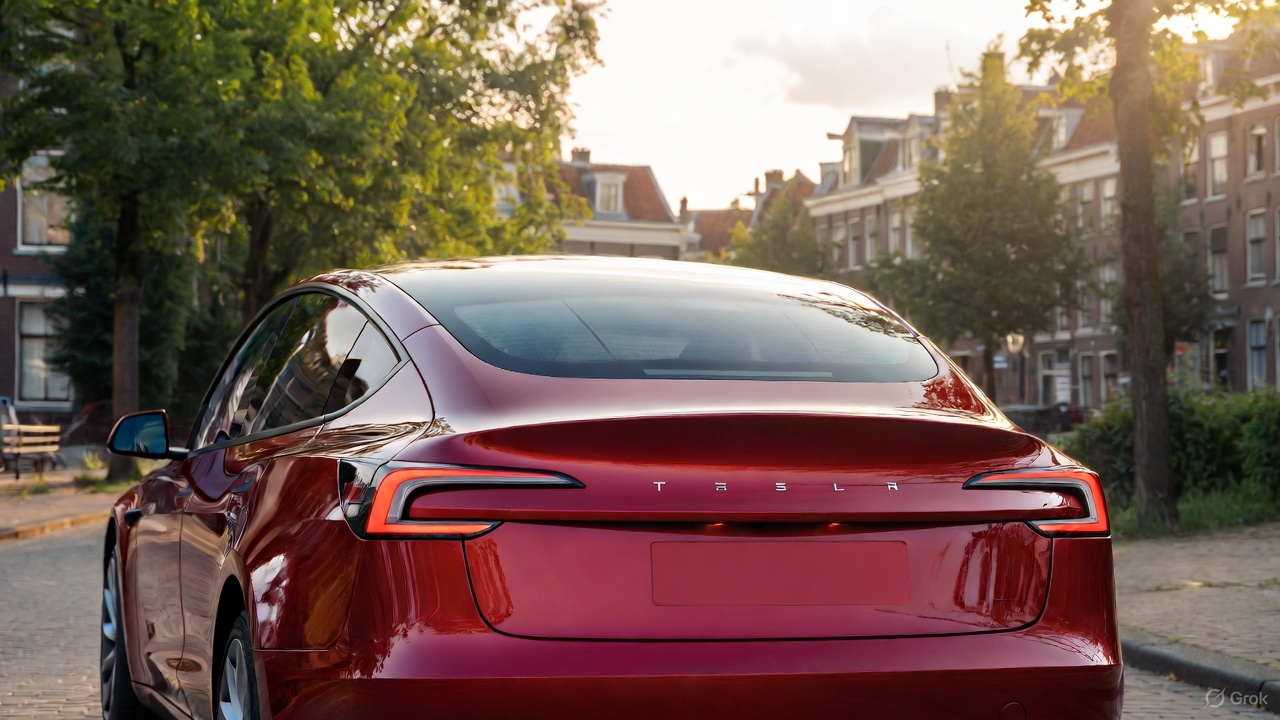
The Dutch vehicle authority RDW responded to Tesla’s recent updates about its efforts to bring Full Self-Driving (Supervised) in Europe, confirming that February 2026 remains the target month for Tesla to demonstrate regulatory compliance.
While acknowledging the tentative schedule with Tesla, the regulator emphasized that safety, not public pressure, will decide whether FSD receives authorization for use in Europe.
RDW confirms 2026 target, warns Feb 2026 timeline is not guaranteed
In its response, which was posted on its official website, the RDW clarified that it does not disclose details about ongoing manufacturer applications due to competitive sensitivity. However, the agency confirmed that both parties have agreed on a February 2026 window during which Tesla is expected to show that FSD (Supervised) can meet required safety and compliance standards. Whether Tesla can satisfy those conditions within the timeline “remains to be seen,” RDW added.
RDW also directly addressed Tesla’s social media request encouraging drivers to contact the regulator to express support. While thanking those who already reached out, RDW asked the public to stop contacting them, noting these messages burden customer-service resources and have no influence on the approval process.
“In the message on X, Tesla calls on Tesla drivers to thank the RDW and to express their enthusiasm about this planning to us by contacting us. We thank everyone who has already done so, and would like to ask everyone not to contact us about this. It takes up unnecessary time for our customer service. Moreover, this will have no influence on whether or not the planning is met,” the RDW wrote.
The RDW shares insights on EU approval requirements
The RDW further outlined how new technology enters the European market when no existing legislation directly covers it. Under EU Regulation 2018/858, a manufacturer may seek an exemption for unregulated features such as advanced driver assistance systems. The process requires a Member State, in this case the Netherlands, to submit a formal request to the European Commission on the manufacturer’s behalf.
Approval then moves to a committee vote. A majority in favor would grant EU-wide authorization, allowing the technology across all Member States. If the vote fails, the exemption is valid only within the Netherlands, and individual countries must decide whether to accept it independently.
Before any exemption request can be filed, Tesla must complete a comprehensive type-approval process with the RDW, including controlled on-road testing. Provided that FSD Supervised passes these regulatory evaluations, the exemption could be submitted for broader EU consideration.
News
Tesla says Europe could finally get FSD in 2026, and Dutch regulator RDW is key
As per Tesla, a Dutch regulatory exemption targeted for February 2026 could very well be the key gateway for a Europe-wide rollout of FSD.
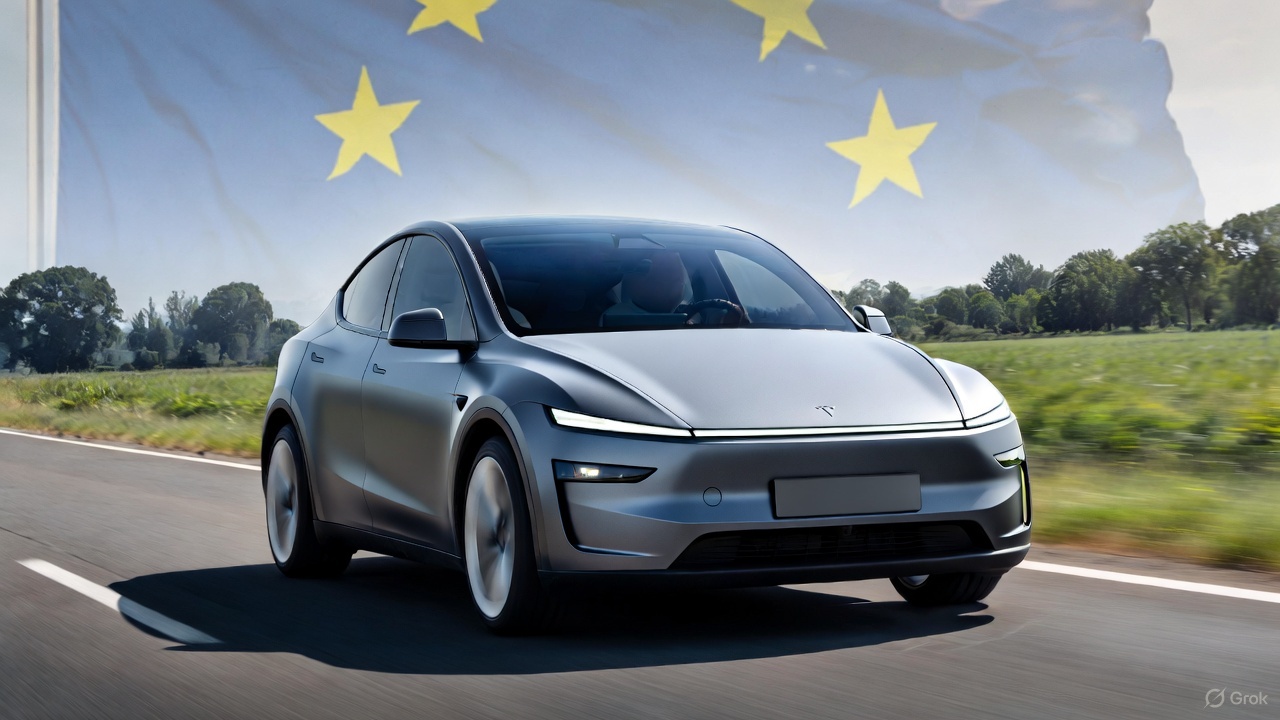
Tesla has shared its most detailed timeline yet for bringing Full Self-Driving (Supervised) to Europe. The electric vehicle maker posted its update through the official X account of Tesla Europe & Middle East.
As per Tesla, a Dutch regulatory exemption targeted for February 2026 could very well be the key gateway for a Europe-wide rollout of FSD.
Tesla pushes for EU approval
Tesla stated that it has spent more than 12 months working directly with European authorities and delivering FSD demonstrations to regulators in several EU member state. Tesla highlighted a number of its efforts for FSD’s release in Europe, such as safety documentation for FSD, which is now included in its latest public Safety Report, and over 1 million kilometers of internal testing conducted on EU roads across 17 countries.
To unlock approval, Tesla is relying on the Netherlands’ approval authority RDW. The process requires proving compliance with UN-R-171 for driver-assist systems while also filing Article 39 exemptions for behaviors that remain unregulated in Europe, such as hands-off system-initiated lane changes and Level 2 operation on roads that are not fully covered by current rules. Tesla argued that these functions cannot be retrofitted or adjusted into existing frameworks without compromising safety and performance.
“Some of these regulations are outdated and rules-based, which makes FSD illegal in its current form. Changing FSD to be compliant with these rules would make it unsafe and unusable in many cases. While we have changed FSD to be maximally compliant where it is logical and reasonable, we won’t sacrifice the safety of a proven system or materially deteriorate customer usability,” Tesla wrote in its post.
Tesla targets February 2026 approval
According to Tesla, real-world safety data alone has not been considered sufficient by EU regulators, prompting the company to gather evidence to get exemptions on a specific rule-by-rule basis. RDW has reportedly committed to issuing a Netherlands National approval in February 2026, which could pave the way for other EU countries to recognize the exemption and possibly authorize local deployment of FSD.
“Currently, RDW has committed to granting Netherlands National approval in February 2026. Please contact them via link below to express your excitement & thank them for making this happen as soon as possible. Upon NL National approval, other EU countries can immediately recognize the exemption and also allow rollout within their country. Then we will bring it to a TCMV vote for official EU-wide approval. We’re excited to bring FSD to our owners in Europe soon!” Tesla wrote in its post.
